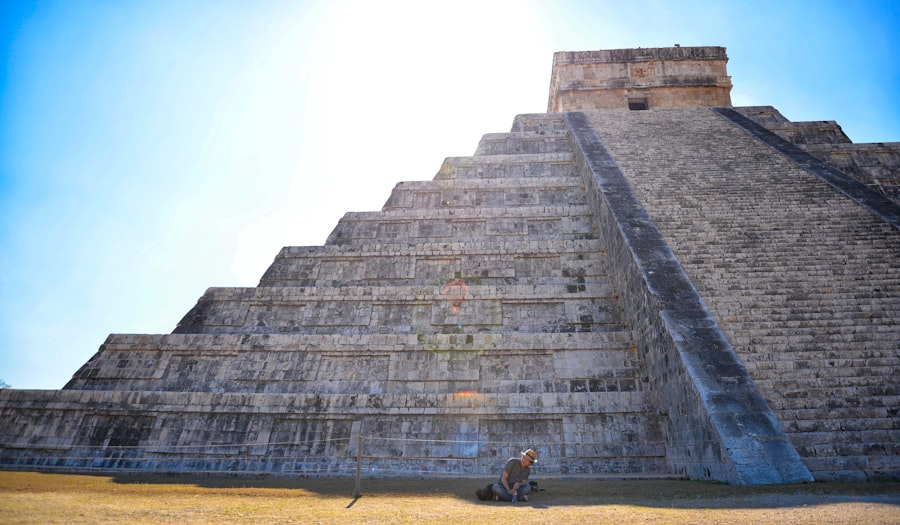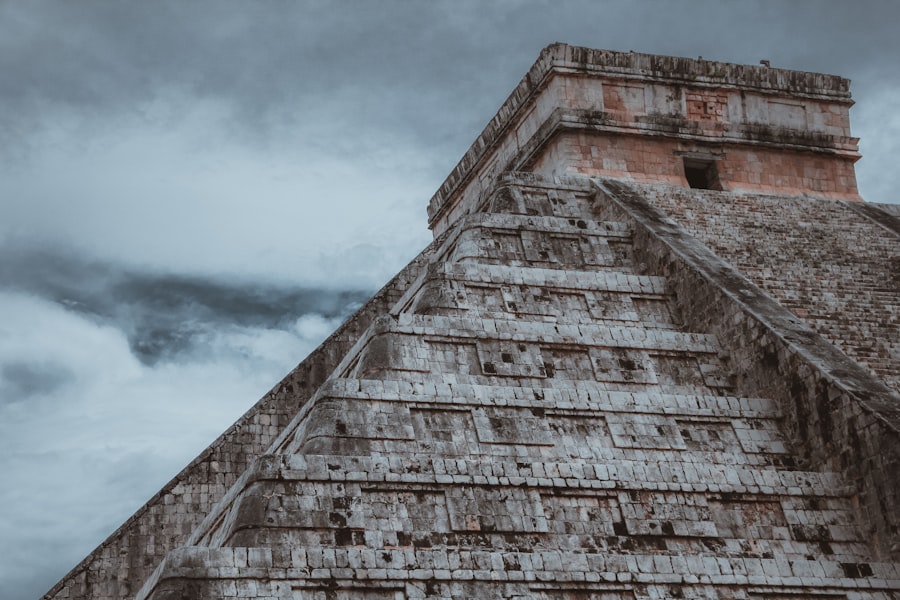When you think of Mexico, vibrant culture, delicious cuisine, and stunning landscapes likely come to mind. However, beneath the surface of this beautiful country lies a treasure trove of archaeological sites that tell the stories of ancient civilizations. From the towering pyramids of the Mayans to the intricate carvings of the Aztecs, these sites offer a glimpse into a rich history that spans thousands of years.
As you explore these remnants of the past, you will not only witness the architectural prowess of these ancient peoples but also gain insight into their beliefs, social structures, and daily lives. Visiting these archaeological sites is more than just a journey through history; it is an opportunity to connect with the very essence of Mexico. Each site has its own unique narrative, shaped by the people who once inhabited it.
As you walk among the ruins, you can almost hear the echoes of ancient rituals and feel the weight of history pressing down on you. Whether you are an avid historian or simply a curious traveler, Mexico’s archaeological sites promise to leave you with lasting memories and a deeper appreciation for the cultures that once thrived in this vibrant land.
Key Takeaways
- Mexico is home to numerous archaeological sites that showcase the rich history and culture of ancient civilizations.
- Chichen Itza is one of Mexico’s most famous archaeological sites, known for its iconic pyramid and impressive ball court.
- Teotihuacan, also known as the City of the Gods, features the massive Pyramid of the Sun and the Avenue of the Dead.
- Palenque is considered the Jewel of the Mayan World, with its stunning architecture and intricate carvings.
- Monte Alban, the ancient city of the Zapotecs, offers breathtaking views of the Oaxaca Valley and impressive stone carvings.
Chichen Itza: Mexico’s Most Famous Archaeological Site
Chichen Itza stands as a testament to the ingenuity and sophistication of the Mayan civilization. This UNESCO World Heritage site is perhaps the most recognized archaeological site in Mexico, drawing millions of visitors each year. As you approach the iconic El Castillo pyramid, also known as the Temple of Kukulcan, you cannot help but be awed by its grandeur.
The pyramid’s precise alignment with celestial events showcases the Mayans’ advanced understanding of astronomy and mathematics. Each equinox, shadows create the illusion of a serpent slithering down the steps, a breathtaking spectacle that draws crowds from around the world. Beyond El Castillo, Chichen Itza offers a wealth of other fascinating structures to explore.
The Great Ball Court, where ancient games were played, is an impressive sight with its towering walls and intricate carvings. As you wander through the site, take a moment to reflect on the significance of these games in Mayan society—more than just entertainment, they were deeply intertwined with religion and politics. The Temple of the Warriors and the Group of a Thousand Columns further illustrate the architectural prowess of the Mayans and their complex social hierarchy.
Each stone tells a story, inviting you to delve deeper into the mysteries of this ancient civilization.
Teotihuacan: The City of the Gods

Teotihuacan, often referred to as “The City of the Gods,” is another must-visit archaeological site that captivates all who enter its vast expanse. Located just outside Mexico City, this ancient metropolis was once one of the largest cities in the world, home to a diverse population that thrived long before the rise of the Aztecs. As you walk along the Avenue of the Dead, flanked by monumental structures like the Pyramid of the Sun and the Pyramid of the Moon, you can almost feel the energy that once pulsed through this bustling city.
The Pyramid of the Sun is particularly striking, standing at 216 feet tall and offering panoramic views from its summit. Climbing to the top is an exhilarating experience that allows you to appreciate not only the scale of this ancient structure but also its significance in Teotihuacan’s cosmology. The site is rich with murals and artifacts that provide insight into the lives of its inhabitants, revealing their artistic talents and spiritual beliefs.
As you explore Teotihuacan, you will find yourself immersed in a world where gods and humans coexisted, each playing a vital role in maintaining harmony within this grand city.
Palenque: The Jewel of the Mayan World
| Metrics | Data |
|---|---|
| Location | Chiapas, Mexico |
| UNESCO World Heritage Site | Yes |
| Estimated Construction Period | 226 BC to 799 AD |
| Architectural Style | Classic Maya |
| Main Structures | Temple of the Inscriptions, Palace, Temple of the Cross |
| Significance | One of the most important Mayan cities |
Nestled in the lush jungles of Chiapas lies Palenque, often referred to as “The Jewel of the Mayan World.” This archaeological site is renowned for its stunning architecture and intricate carvings that depict scenes from Mayan mythology and history. As you wander through Palenque’s ruins, you will be struck by the beauty of its structures, particularly the Temple of Inscriptions, which houses one of the most important tombs in Mayan history—the tomb of King Pakal. The artistry found in Palenque is unparalleled; each carving tells a story that reveals insights into Mayan beliefs and practices.
The site is also notable for its advanced urban planning, with a complex water management system that showcases the ingenuity of its builders. As you explore further, you will encounter temples, palaces, and plazas that speak to a civilization deeply connected to its environment and its gods. The sounds of nature envelop you as you traverse this ancient city, creating an atmosphere that feels both sacred and timeless.
Monte Alban: The Ancient City of the Zapotecs
Monte Alban stands as a remarkable testament to the Zapotec civilization, perched high on a mountain overlooking the Oaxaca Valley. This ancient city was one of Mesoamerica’s first major urban centers and offers breathtaking views that enhance your experience as you explore its ruins. As you walk through Monte Alban’s plazas and temples, you will be captivated by its unique architecture and layout, which reflects a sophisticated understanding of urban planning.
The site is dotted with impressive structures such as the Main Plaza and the Observatory, each revealing aspects of Zapotec life and culture. The intricate stone carvings found throughout Monte Alban depict scenes from daily life, warfare, and religious rituals, providing valuable insights into this ancient society. As you stand among these ruins, take a moment to appreciate how Monte Alban served as a political and cultural hub for centuries, influencing neighboring regions and leaving an indelible mark on Mesoamerican history.
Tulum: The Mayan Ruins by the Sea

Tulum offers a unique blend of history and natural beauty, making it one of Mexico’s most picturesque archaeological sites. Perched on cliffs overlooking the Caribbean Sea, Tulum was once a thriving port city for the Mayans. As you approach this stunning site, you are greeted by breathtaking views that make it easy to understand why this location was chosen for such an important settlement.
The well-preserved ruins at Tulum include impressive structures such as El Castillo and the Temple of the Frescoes. These buildings not only showcase Mayan architectural prowess but also serve as reminders of their connection to both land and sea. The murals found within Tulum’s temples depict scenes from Mayan mythology and daily life, offering glimpses into their spiritual beliefs and societal norms.
As you stroll along the coastal paths, take time to reflect on how this ancient civilization thrived in harmony with its environment—a lesson that resonates even today.
Uxmal: The Puuc Region’s Architectural Gem
Uxmal is often regarded as one of the finest examples of Puuc architecture in Mexico. This archaeological site is characterized by its elaborate stonework and unique design elements that set it apart from other Mayan cities. As you enter Uxmal, you are immediately struck by the grandeur of structures like the Pyramid of the Magician and the Governor’s Palace, each showcasing intricate mosaics and decorative motifs that tell stories from Mayan mythology.
The Pyramid of the Magician is particularly fascinating due to its unusual oval shape and steep steps leading to its summit. Climbing to the top rewards you with stunning views of Uxmal’s sprawling landscape and surrounding jungle. The site is also home to numerous smaller buildings adorned with detailed carvings that reflect both artistic skill and cultural significance.
As you explore Uxmal’s ruins, you’ll find yourself immersed in a world where architecture served not only practical purposes but also conveyed deep spiritual meanings.
Coba: The Ancient Mayan City in the Jungle
Coba is an archaeological site shrouded in mystery and surrounded by dense jungle—a true hidden gem waiting to be discovered. Unlike some other well-known sites, Coba remains less commercialized, allowing for a more intimate experience as you wander through its ancient pathways. The site is famous for its extensive network of sacbeob (white roads) that connect various structures across its sprawling landscape.
One of Coba’s most impressive features is Nohoch Mul, one of the tallest pyramids in Mexico. Climbing this pyramid offers not only a physical challenge but also an opportunity to witness breathtaking views over the treetops—a reminder of how nature has reclaimed much of this ancient city. As you explore Coba’s ruins, you’ll encounter stelae adorned with hieroglyphics that provide insights into Mayan history and culture.
The jungle atmosphere adds an air of adventure to your visit; every rustle in the leaves could be a reminder that you’re walking through a once-thriving civilization now reclaimed by nature. In conclusion, Mexico’s archaeological sites are not just remnants of ancient civilizations; they are gateways into understanding human history and culture. Each site offers unique stories waiting to be uncovered—stories that connect us to our past while inspiring us for our future.
Whether you’re drawn to Chichen Itza’s iconic pyramids or Coba’s jungle-covered ruins, your journey through these historical landscapes will undoubtedly enrich your appreciation for Mexico’s diverse heritage.
